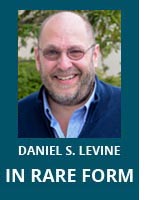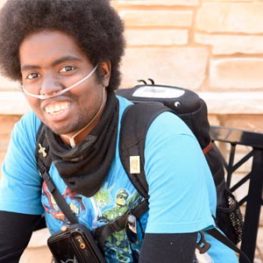
Marquis Valentine was suffering from pain caused by his sickle cell disease. He had spent six weeks in the hospital and had been moved to a different facility to be seen by a specialist for his epilepsy. When he asked the nurse at the new hospital for a patient-controlled analgesia pump—a device that allows patients to self-administer pain medication without overdoing it—she refused his request.

Photo: Marqus Valentine, co-founder of Sick Cells
The
nurse had seen his blood test results and decided his sickle cell crisis had
improved to the point where he no longer needed pain medication. She told him
she thought he was addicted to the drugs. “Nothing can prepare you for being
called a drug addict, especially when you don’t want to be in a hospital,”
Valentine said.
Because he had been in the hospital for so long, he lacked muscle strength. He
was re-learning how to walk after being in bed for so many weeks. Despite still
being quite ill, he discharged himself. His sister Ashley left work to care for
him and the family arranged for doctors to come to the home for the next month as
they nursed Marqus back to health and addressed his medical needs.
“Sickle cell is not a black disease. It’s a blood disease,” said Ashley
Valentine, who co-founded the patient organization Sick Cells with
Marqus. “For the longest time, even up to now, it has been classified as a
black disease. And that means that every black person with sickle cell has to
suffer the social consequences of being black in America. And then anyone who
isn’t black with sickle cell disease also gets the other side effect where
people don’t believe them either because they don’t look the right color.”
Sickle cell disease is a rare, genetic
condition that alters hemoglobin, the protein in red blood cells that
transports oxygen throughout the body and causing red blood cells to become misshapen
and take on a crescent form. These sickled cells can get stuck in small blood vessels
and cause painful episodes that deprive tissues and organs of oxygen and lead
to permanent damage to organs.
While one in 13 African Americans carry the sickle cell trait, the condition is by no means
limited to the African American community. It is most prevalent among people from sub-Saharan Africa, Spanish-speaking regions in the
Western Hemisphere, Saudi Arabia, India, and Mediterranean countries, according to the Centers for Disease Control and Prevention.
The perceptions about the disease and its entanglement with race can work against patients who are not African American. Doris Polanco, a member of the Sickle Cell Thalassemia Patients Network, said she’s been met with disbelief when she’s gone into emergency rooms and declared she has sickle cell disease. She was born in the United States and is of Dominican descent. Some healthcare workers have assumed she was lying to get drugs, unaware that people who are not African American can have sickle cell disease.
“’It’s impossible for you to have sickle cell because you are not black,’” Polanco said she’s been told by nurses in emergency rooms. “I understand that’s the perception that is out there, but you can’t just look at me and say it’s impossible for you to have something because you are not a certain color. From there on, they treat you with doubt.”
Ashley Valentine said there are stigmas and perceptions that exacerbate the problems these patients face in getting proper care. These include dismissing fatigue these patients feel by thinking they are just lazy. Dismissal of a patient’s pain by healthcare professionals, assumptions that a patient is an unjustified drug seeker, and even the drug industry’s slow pace to pursue new medications for the disease is colored with overtones of racism. She recalls being at one meeting where she heard one person discourage investment in sickle cell disease because “It’s a Medicaid population.” “That’s almost dog-whistle for ‘poor black disease. Don’t invest. There’s no money there.’”
Fortunately, the attitude toward investment in sickle cell disease is changing. In 1998, the U.S. Food and Drug Administration approved hydroxyurea, a drug that helps prevent red blood cells from sickling and can reduce complications from the condition for use by adults. It was the only drug approved for the condition until 2017, when the FDA approved Endari, a drug that reduced acute complications of sickle cell disease. In 2017, the FDA expanded the use of hydroxyurea for use in children too.
Today, there is a growing pipeline of therapies in development including gene-editing and gene therapy, which have the potential to significantly change the course of the disease for patients. That’s good news for people with sickle cell disease.
It’s troubling when any patient is denied access to needed treatments, but there something particularly cruel when such denials are for pain medication and the reasons are tinged with racism and driven by ignorance. While patients must wait for new drugs to go through clinical trials and regulatory review, there’s no reason to tolerate delays in addressing fundamental failures of providing the care and respect any patient deserves.
You can listen to this week’s RARECast featuring an interview with Marqus Valentine and Doris Polanco.

Stay Connected
Sign up for updates straight to your inbox.
